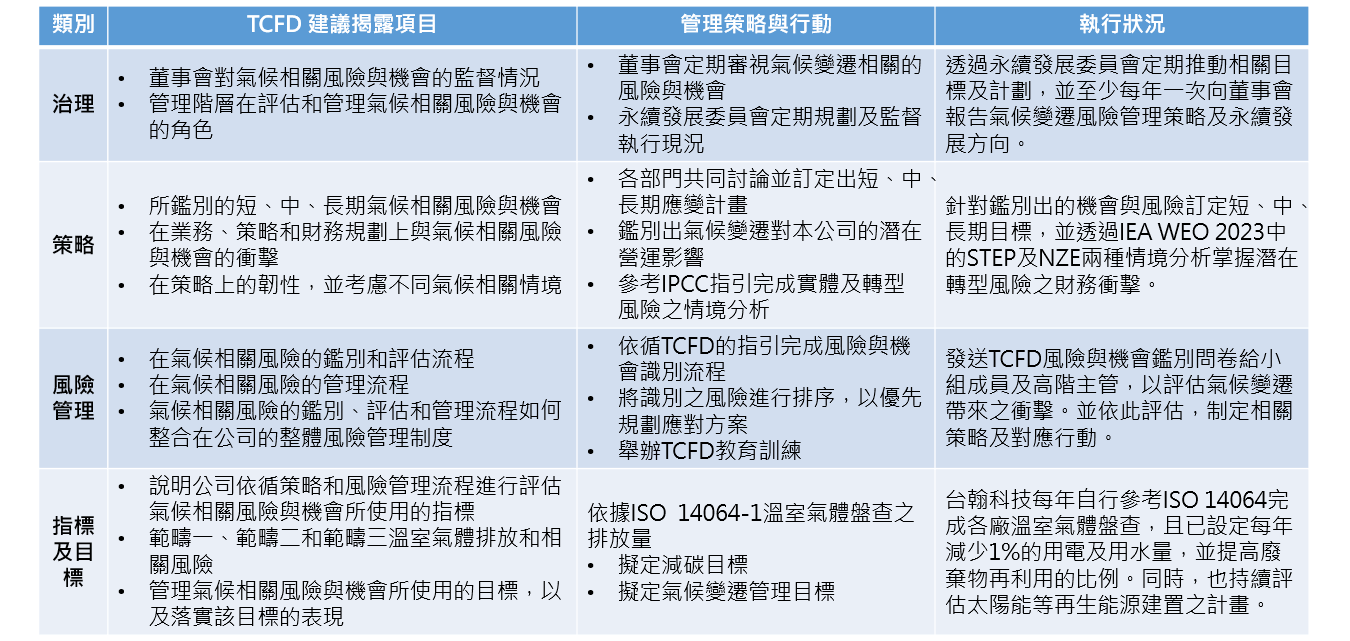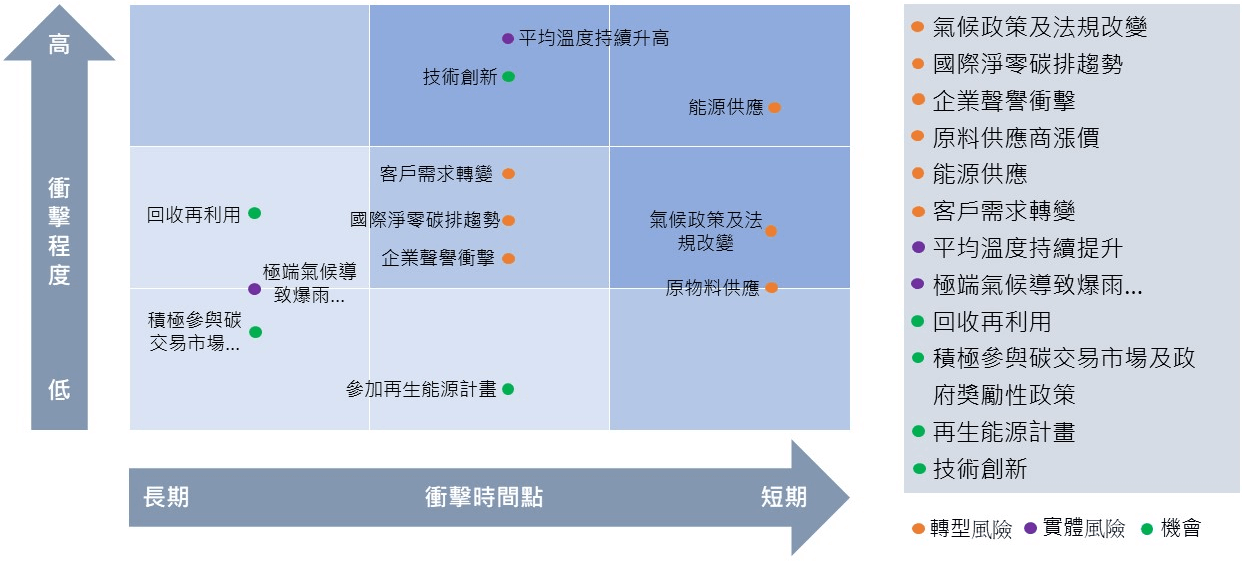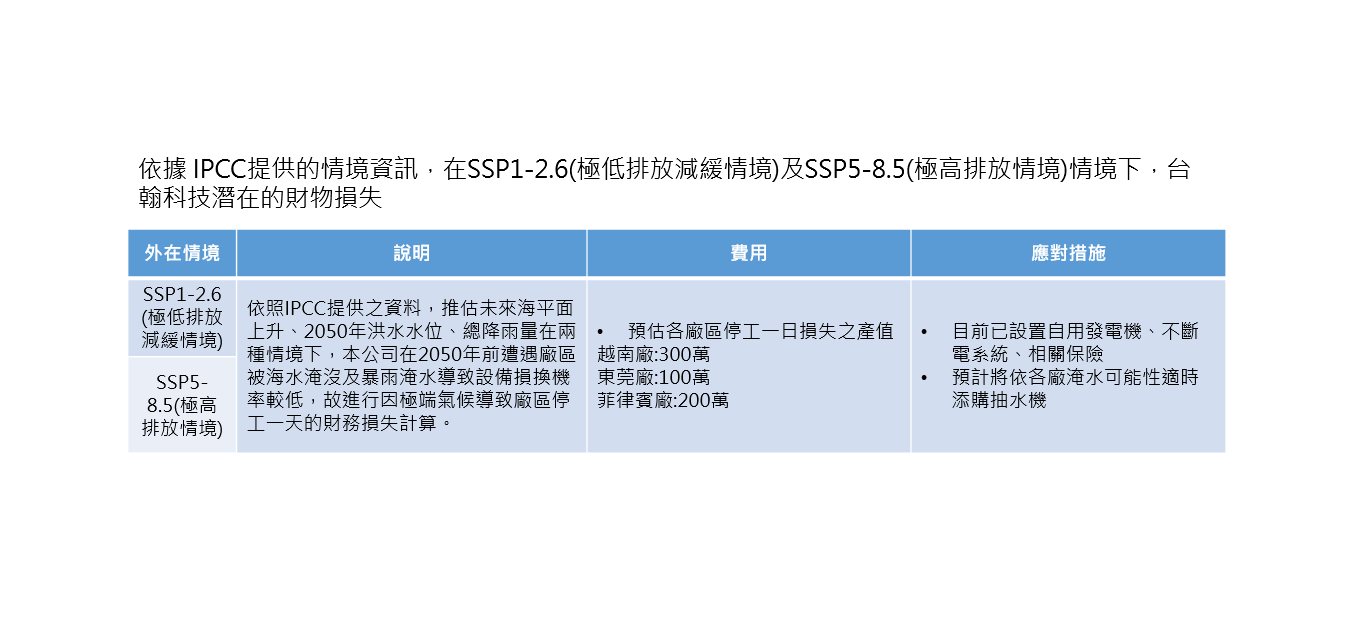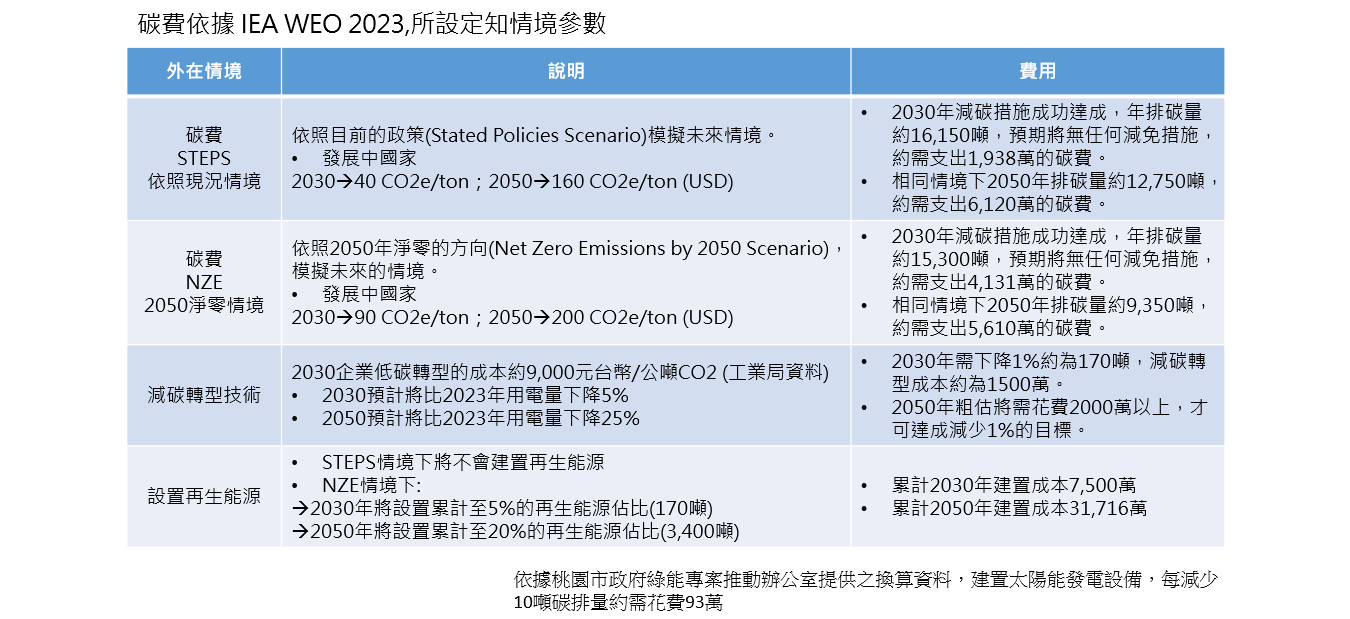ESG
Main Menu
Climate Change Response
Task Force on Climate-related Financial Disclosures (TCFD)
In order to more fully understand the impact of climate change on Taihan Technology, the TCFD (Task Force on Climate-Related Financial Disclosures) framework will be adopted from 2022 to identify risks and opportunities, assess possible financial impacts, and then set responses based on the identification results.

Materiality Analysis of risks and opportunities of Climate Change
In recent years, the operational impacts caused by climate change have increased rapidly and are full of high uncertainties. Therefore, Taihan Technology uses the TCFD method to identify 8 major risks during its operations, evaluate and manage them to reduce the financial impact on the company.

| Risk Type | Related topics | potential financial impact | Impact time | preventive solution |
|---|---|---|---|---|
| Transition risk | Policy and Regulatory Risk | Total GHG emission control, carbon fees, carbon taxes, and carbon trading lead to increased costs | short term | 1. New factory building planning and renewable energy power generation equipment 2. Plan to purchase renewable energy certificates |
| International Net Zero Carbon Emissions Trends | The cost of renewable energy construction and low-carbon equipment purchase increases | medium term | 1. New factory building planning and renewable energy power generation equipment 2. Gradually replace old and energy-consuming machines |
|
| Impact on reputation | The impact of revenue reduction caused by failure to meet customer needs | medium term | 1. Regularly publish sustainability reports to reveal the company’s sustainability direction 2. Actively participate in sustainability evaluations |
|
| Raw material supply | New technology investment | medium term | Application of recycled plastics and recyclable plastics technology | |
| Changing customer needs | Customer requirements for environmental friendliness in the production process | medium term | 1. Increase the proportion of renewable raw material production 2. Actively develop diverse customers |
|
| energy supply | National energy transition policies or geopolitical factors lead to energy shortages, production interruptions, and rising electricity bills. | medium term | Increase the proportion of renewable energy in electricity consumption | |
| Physical risk | Extreme weather leading to increased severity of heavy rains, floods or droughts | The number of extreme weather days is increasing, and the chances of flooding and water shortages are increasing, leading to shutdowns, production reductions and equipment damage. | long term | 1. Improve factory water efficiency 2. Check whether the factory area is a high-risk area for drought or flooding at any time |
| Average temperatures continue to rise | The usage time of cooling equipment increases, and the consumption of refrigerant and electricity increases. | long term | 1. Set the air conditioner at 28 degrees 2. Promote energy conservation and carbon reduction internally |
| Opportunity type | Related topics | potential opportunities | Impact time |
|---|---|---|---|
| resource efficiency | Recycle | Packaging materials and water recycling | medium term |
| energy source | Actively participate in the carbon trading market and government incentive policies | Obtain additional carbon rights through the carbon trading market and government incentive policies | medium term |
| Renewable Energy Plan | Build solar energy in advance, and put excess renewable energy into carbon trading or use it yourself | medium term | |
| technological innovation | The energy consumption and pollutants generated per unit of product production are reduced, and the overall production cost is reduced. | long term |
Scenario Analysis - Physical Risk

Scenario Analysis-Transition Risk

Climate Change Response Strategies
